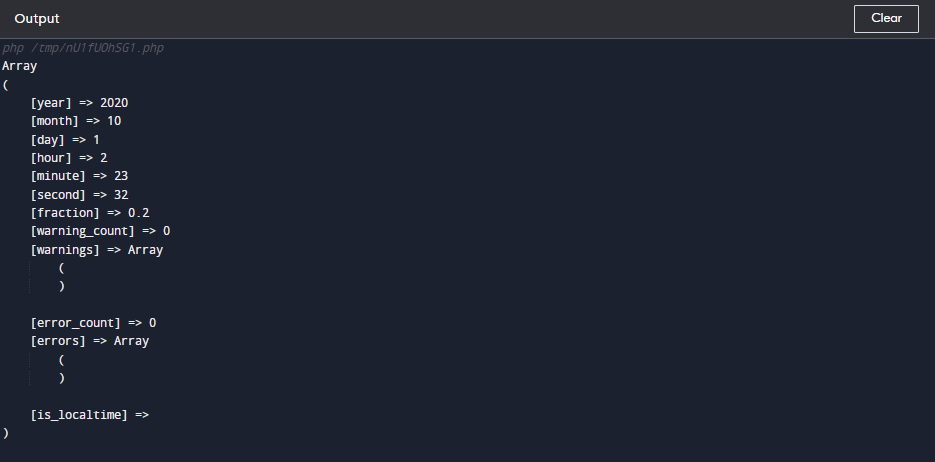What is the date_parse() Function?
A built-in function in PHP called date_parse() may be used to break down a date string into its component components and return an array of values for each of those values. In PHP, this function is particularly helpful for changing date and time values.
To use the date_parse() function, you must provide it with a date string as its input. This date string can be in any of the formats supported by PHP, such as YYYY-MM-DD or DD-MM-YYYY. The function will then parse this string and return an array containing the various parts of the date, such as the year, month, and day.
The syntax for the date_parse() function is straightforward. The only parameter given to this function is the date string that you want to parse. The syntax for the function is as follows:
The $date_string parameter is the date string that you want to parse, and the function returns an array of values that represent the various parts of the date. Note that the date_parse() function always returns an array, even if the input string is invalid.
Some example code that uses the date_parse() function is shown below:
Example 1
This code declares a variable $date_string that contains a date string in the format YYYY-MM-DD. The code then uses the date_parse() function to parse this string and store the results in a variable called $date_parts. Finally, the code prints out the $date_parts array.
As you can see, the array contains the year, month, and day values that correspond to the input date string. The other elements in the array are related to any warnings or errors that may have been generated during the parse.
Example 2
The above code breaks down the date string “2020-10-01 02:23:32.2” into its parts using PHP’s date_parse() function. The parsed output is then printed using the print_r() function.
While the date_parse() function is straightforward to use, there are a few notes to keep in mind when using it in practice. For example, the function can be used to parse dates in any format supported by PHP, but it is important to ensure that the input string is properly formatted. If the input string is not entered correctly, the function may return unexpected results.
Conclusion
The PHP date_parse() function is a powerful function for the breakdown of date and times in PHP. This function is easy to use and provides a convenient way to extract individual components of a date string. However, it is important to use the function carefully and ensure that the input string is properly formatted.


